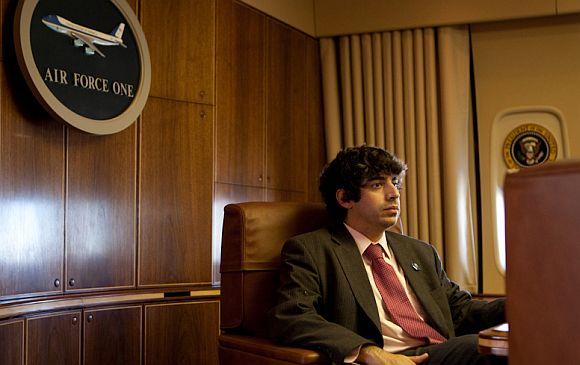 | « Back to article | Print this article |
In conversation with Obama's first cameraman
Arun Chaudhary was thrown out of the Indian Parliament during President Barack Obama's trip to India in November 2010. Not because he was not supposed to be there, but because he intentionally identified himself as the official White House photographer.
What he was in reality was the official videographer of the US President.
He later told the National Public Radio, "Someone looked at me and saw my camera and says, 'Oh, you must be [Chief Official White House Photographer] Pete Souza.' And Pete did have access to the thing that I kind of wanted to shoot and was already with the President, and so he was already in position. And so I was like 'Yeah, sure. Why not? I am Pete Souza, let's see where this goes'."
"And where that ended up going was around a winding set of corridors and to someone who identified me as not Pete Souza and then that led me to the back door of the Indian Parliament, where I was unceremoniously thrown out of Indian Parliament by my belt."
Having travelled extensively with President Obama, Chaudhary has captured public events and behind-the-scenes moments as well as produced and packaged presidential tapings for the Internet and broadcast television
He recently chronicled his time capturing behind-the-scenes moments of the President and his administration in his book First Cameraman
Sriram Bala caught up with Chaudhary, now senior vice president of communications at Revolution Messaging and a fellow at George Washington University.
How was your experience as the first videographer in the White House?
It was amazing. Though this is a generic question, overall it was a great experience especially having the opportunity to video President Obama all through. In addition, for someone who has no affiliation towards politics, this was a good opportunity to see live the activities of the President
Click on NEXT to read further...
'Obama told me to have a haircut when I was shooting him'
Could you explain what your exact role was and how you got the opportunity to work with the White House team?
My role was to capture the behind-the-scene moments of the President and provide a recording of his activities in the White House and outside. I got the opportunity through a friend of mine who was part of Obama 2008 (election campaign) and who had gotten me into the campaign. This was something out of the blue.
What were some of the highlights of your tenure in the White House? Any interesting moments with the President?
There were many. The treaty signed by the President in Prague and watching the President do both the presidential executive and ceremonial executive roles with ease.
You could see him at one moment being with an Afghan family and the next moment being with the sports team.
He is uniquely even tempered and very good at handling people. My personal best moment was when he had requested me to have a haircut when I was shooting him!
Click on NEXT to read further...
'Obama's success has motivated Indian Americans to succeed'
Being an American Indian, what challenges have you faced in America?
I am half Indian and half Jewish. One of the major challenges that Indians face is the community's reluctance to embrace public service as a career.
Public service was not emphasised by the previous generation of American Indians.
That is changing now with the likes of people like Bobby Jindal and Nicky Haley emerging from the American Indian community.
The success of Obama has made a big difference in motivating Indian Americans to succeed
Click on NEXT to read futher...
Behind the scenes with Barack Obama
Obama 2008 had a successful media campaign. You played an integral role in that. Could you elaborate on it? What made it so successful?
I was doing the video for the 2008 Obama campaign. It was basically taking videos across the campaign and instantly putting them across media platforms.
I think the major factor that made it successful was the scale and pace of the campaign. It was instantaneous and reached large sections of people.
How has the media campaign been this time around?
It has been very good this time too. There has been an evolution with technology over the years. Now it is more data driven with more empirical data.
Moving away from the mass spectacles such as conventions, there has been an increased focus on the individual consumer experience and addressing what the individuals want. Obama campaign has done a brilliant job in this.
Click on NEXT to read further...
November 6: 'My bet is on President Obama'
How did the book First Cameraman come about?
The new book is about tying both my White House experiences and historical trends in videography together. It also reflects about some of the interesting moments I had during my experience at the White House.
It also highlights the time in history where we are at the cross roads of technology and arts -- Obama was a perfect example of it
Which way do you think the elections would go this time? Do you think Obama would come back to power despite a shaky economy?
It would be close and it would be interesting to see who comes out on top.
My bet is on the President purely because of what he has done and his connect with the people.
Sriram Bala can be followed on Twitter @Sriram316




